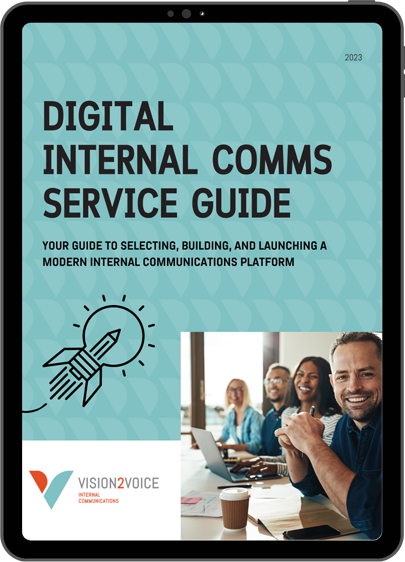“Empathy is the innate trait that unites us in our common humanity.”
~ Anita Nowak
I don’t know how many times I’ve watched Brené Brown’s short on empathy. That’s because displaying true empathy is hard.
Let’s face it, as communication professionals, it’s much easier to get out our pom-poms, add happy faces, and putt a silver lining on everything. The problem with glossing over the feelings that people experience when our organizations are navigating uncertainty, change, and tough times is that it’s just not helpful.
Why We Shy Away from Empathy
As I’ve learned from studying empathy, watching Brené Brown’s short video repeatedly, and trying to practice it myself, empathy is hard.
It’s challenging because it requires us to do something deeply uncomfortable: face our own emotions. To connect with someone else’s experience, we have to tap into similar feelings within ourselves, which can be painful and requires courage and vulnerability.
And emotions are messy. They shift minute by minute, and what one person feels in a situation can be wildly different from what someone else experiences. That unpredictability makes empathy feel risky. There’s no script, no guaranteed response, and so we need to be willing to show up, listen, and try to understand—even when it’s uncomfortable.
And yet, despite the discomfort, empathy is worth it. In fact, it’s essential–especially in communication. When we choose to acknowledge, reflect, and respond with empathy, we create space for trust, connection, and understanding. We stop talking at people and start connecting with them. And in times of uncertainty, change, or stress, that kind of connection isn’t just nice to have, it’s what helps people feel seen, supported, and ready to move forward.
Here are five steps you can take to build empathy into your communication strategies:
Improve your emotional literacy
Few of us are actually in touch with our feelings or can identify our emotions. When you ask someone how they are, the response is usually, ‘good.’ Good is not a feeling. Many of us have spent years suppressing our emotions, especially at work. Yet our emotions are always there, whether we admit it or not.
To improve your emotional literacy, start by expanding your emotional vocabulary. Learning to recognize and name more nuanced and complex feelings is a skill. Resources to help you on this journey include Brené Brown’s book Atlas of the Heart, a feelings wheel or Dr. Marc Brackett’s Mood Meter.
Then practice identifying and naming emotions by slowing down, pausing, and taking notice of the emotions you see in yourself and others.
Communicate with heart
Once you’ve strengthened your emotional literacy, the next step is to bring empathy into how you communicate — through your words, tone, visuals, and delivery.
That means moving beyond corporate-speak and tapping into the emotional landscape of your audience. But here’s the nuance: people are not their emotions, and one announcement may spark many different reactions. So instead of saying, “I know you’re all feeling scared or worried,” try something like:
“We understand this news may bring up a range of emotions — from uncertainty to curiosity to concern. That’s valid. And we’re here to support you every step of the way.”
Empathetic communication doesn’t assume. It acknowledges. It holds space. And most importantly, it reminds people they’re not alone.
Don’t stop at know, think, do
Most communication goals focus on what employees should know, think, or do — but they often overlook how we want people to feel.
Every message elicits an emotional response, whether we intend it to or not. So why not be more intentional?
Including emotional outcomes in your communication goals helps build trust, inspire action, and create a deeper connection. Whether it’s confidence, clarity, pride, or a sense of belonging, creating an emotional connection with employees is the key to engagement. Make them part of the plan.
For example, during a change initiative, your goals might be:
- Know: What’s changing and why
- Think: “This makes sense for where we’re headed”
- Do: Start using a new system or process
- Feel: Informed, supported, and ready — not blindsided or overwhelmed
When you plan for emotion, you create communication that leads with empathy and lands with impact.
Build psychological safety
Psychological safety isn’t about good vibes or a soft, feel-good work environment. It’s a core condition for trust, innovation, human connection, and performance.
At its core, psychological safety means that people feel secure speaking up with their ideas, concerns, questions, and even mistakes without fear of embarrassment or retaliation. As Amy Edmondson, the leading voice on the topic, puts it, it’s about creating a fearless organization.
And here’s where empathy comes in: when people feel safe to express themselves, they’re more likely to share personal experiences and emotions, which deepens understanding, strengthens relationships, and builds a culture where people truly listen to one another.
Empathy and psychological safety fuel each other. A psychologically safe team is more likely to respond with compassion, and a culture of empathy makes people feel safer being honest and human at work. Together, they create the conditions for more effective conversations, collaboration, and outcomes.
Measure emotion
The best modern intranets and communication platforms don’t just measure clicks — they measure how people feel.
Sentiment analysis in modern intranet tools like Simpplr and Staffbase can help you uncover the emotional tone behind employee feedback, comments, and engagement patterns. You can also include questions that measure emotion in pulse surveys, focus groups, and other feedback mechanisms.
Understanding sentiment gives you more than just data–it gives you insight. By tracking how employees respond to changes, leadership messages, or workplace culture, you can adjust your communication approach in real-time.
This emotional insight allows you to show up with empathy, validating concerns, celebrating wins, and responding to what really matters. When employees feel seen and understood, communication becomes more human, more effective, and more trusted.
Communication that feels like it matters
Empathy isn’t a soft skill — it’s a strategic one. When we acknowledge emotions instead of avoiding them, when we communicate with heart instead of hiding behind polished messaging, we unlock something powerful: trust, connection, and genuine engagement.
For internal communication professionals, this means getting a little uncomfortable. It means moving beyond templates and timelines and diving into the messy, marvellous world of human emotion — because that’s where real communication lives.
If you’re ready to bring more empathy into your strategy, your storytelling, and your leadership messages, we’d love to help. Get in touch and let’s build a communication that doesn’t just inform but truly delivers results.
You never really understand a person until you consider things from his point of view, until you climb inside of his skin and walk around in it.”
~Harper Lee, To Kill a Mockingbird
Also just wanted to confirm – there was no period after “connects” – is this thought complete or did you want to add more? (I added a period for now)






